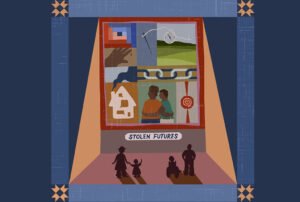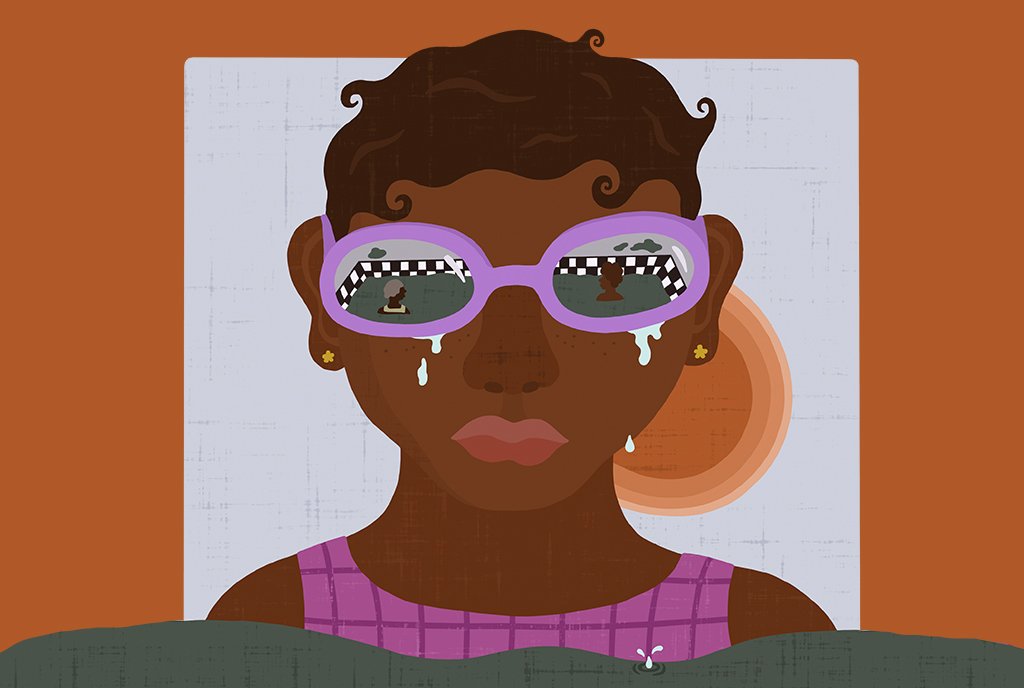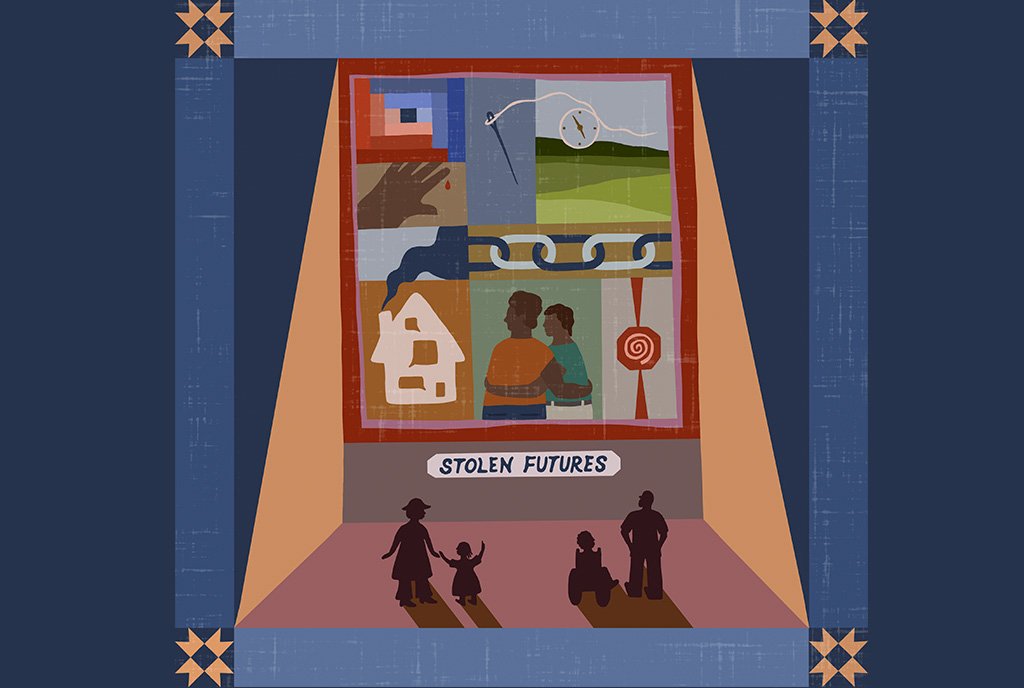
In Southern California, the power company has shut off the electricity to over 240 households in a desperate attempt to keep residents safe—and get them out. The houses are in the Portuguese Bend region, in the coastal Rancho Palos Verdes neighborhood, positioned precariously on land that keeps shifting.
Rancho Palos Verdes is a winding, hilly location studded with palm trees. Many of its homes are worth millions, thanks to their Pacific shoreline views. But the area sits upon a volcanic ash bed, millions of years old, which has been weakened by extreme weather caused by climate change. Deep landslides have occurred below the homes for decades; in recent weeks, prompted by heavy rain, the slow-moving landslides sped up and grew bigger.
Portuguese Bend is part of a larger, troubling trend when it comes to insurance in a climate-changed world.
Earthquakes and human-caused activities like building roads without grading or proper drainage or placing fill during construction can also generate landslides. Back in 1989, Engineering Geology wrote about Portuguese Bend: “Ground failure has been widespread in this area. It evidently began in mid- to late-Pleistocene time, and it has continued intermittently to the present.”
Those intermittent landslides have turned near-constant, and the movement of the land “unprecedented,” according to the Los Angeles Times which reported that land in Rancho Palos Verdes was now moving as much as a foot a week. Dramatic photographs of the area show buckling roads like giant waves, sectioned off by makeshift barriers of chain-link fences, orange traffic cones sticking out at all angles. The houses look dark, surrounded by tarps and rubble.
And still, many residents won’t go.
The Problem of Insurance
What’s keeping some of the residents of Rancho Palos Verdes in their threatened homes, even as the land shifts and sinks beneath them?
“The land in Rancho Palos Verdes, situated atop the bluffs of the Palos Verdes Peninsula [is] home to prime real estate, including the Trump National Golf Club Los Angeles,” according to NBC News, while CNN described Rancho Palos Verdes as an “affluent coastal city in Southern California, around 30 miles south of Los Angeles, [which] has long enticed people with its Pacific Ocean views and lush greenery.”
It’s not simply that these pricey homes are losing value as the earth below slides away and neighborhoods become untenable. Homeowners may not be reimbursed for damages because regular home insurance policies in California do not cover earth movement damage. “If their house starts to slip away, there’s an extreme likelihood they’ll never be covered,” insurance broker Scott Carter told NBC4 Los Angeles. That’s led some residents to hunker down, hoping to somehow protect their houses, though without utilities—gas was shut off, even before the power was cut—such a stand-off is becoming increasingly difficult.
The world has been dealing with escalating climate disasters for long enough, we know the hard, often impossible path to recovery.
Portuguese Bend is part of a larger, troubling trend when it comes to insurance in a climate-changed world. Homeowners can’t get insured in parts of the country seen as more vulnerable to the impacts of climate change—large and varied segments of the US which include California with its landslides and wildfires, and hurricane and severe storm-prone Florida. Or insurance premiums increase so rapidly after a climate disaster, people can’t afford to insure their houses or even to live in their home states anymore. NPQ reported in 2023 that “insurers have underestimated climate change,” leading to a quarter of all homeowners in the US who could lose their insurance because of the climate crisis. This miscalculation is being blamed for the steep and sudden rises.
Sign up for our free newsletters
Subscribe to NPQ's newsletters to have our top stories delivered directly to your inbox.
By signing up, you agree to our privacy policy and terms of use, and to receive messages from NPQ and our partners.
Displacement and Shattered Lives
Some people are even more vulnerable when climate disasters strike, including mobile home residents and people who rent, rather than own, their homes. But every person displaced by a climate disaster faces the problem of where to go.
In Rancho Palos Verdes, the Ladera Olympic Community Center has opened as an emergency shelter. During the Great Smoky Mountains wildfires of 2016, which displaced 14,000 people, some survivors were sent to hotels, which was also the case during the British Columbia, Canada, wildfires in 2021. Some of those people are still there today.
In a Canadian Geographic excerpt of his book Climate Hope, David Geselbracht wrote in 2024 of the “displaced families, shifting between hotel rooms for months and even years…grandmothers and grandfathers, parents and children, all far away from friends and community.”
Not knowing where to go can cause hesitancy on the part of people who need to evacuate—but so can having the very clear knowledge that they might never be able to return or will find their homes irreparably changed if they finally do manage to come back. The world has been dealing with escalating climate disasters for long enough. We know the hard, often impossible path to recovery. “A hotel is not a home,” Geselbracht wrote. “And the homes that burn down are not rebuilt for years.”
Compounding Issues and the Groups Stepping In
Climate evacuations throw every aspect of life into flux. Extended families may be separated, tearing community members from their support. People don’t always have a way to charge their phones, which can lead to more chaos and confusion. Children’s school attendance is disrupted, and parents can’t always get to work, which could mean not being paid. Important papers may be lost, as essential medications can be too without an easy way to refill them. Medical treatment is disrupted. Foods can be ruined in turned-off refrigerators or left to spoil, and houses may be looted.
All these issues are compounded when evacuees live in poverty, don’t have the resources to rebuild, or lack family support. Inequities are magnified in a climate disaster. Some Florida residents of Port Charlotte and North Port, for example, never returned to their homes after Hurricane Ian ravaged the area in 2021, unable to afford repairs—or to wait years for insurance reimbursements that may never come.
Nonprofits like World Central Kitchen, well-known for feeding displaced or threatened people, have stepped in to provide on-the-ground assistance for climate evacuees. Equal Justice Works brings lawyers into climate vulnerable communities for support when essential paperwork is lost, and to help impacted people find assistance and emergency funding.
In Rancho Palos Verdes, residents of threatened homes are not receiving aid for rentals—their houses have until recently been worth millions, though some older residents have lived in them for over 50 years. Back then, some housing lots could be purchased for as little as $1,000. But the neighborhoods, like the land beneath them, have changed.
As CNN reported, “The sight of luxurious, ocean-front houses teetering precariously over cliff tops or part-swallowed by the ground is not unfamiliar in this part of the US. Landslides destroy homes, take lives and leave communities fearing for their future.”
It’s unclear if the million-dollar addresses will mean less sympathy for displaced residents or more media attention paid to the climate disaster—but the route to recovery for those impacted will always be long; it shouldn’t be surprising that people fear and dread taking it.











